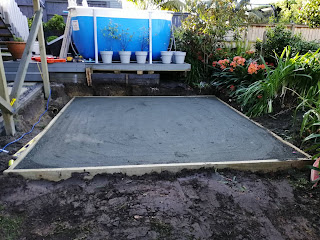Find out Earthworks and Landscaping Solutions
Earthworks: Mounds, Walls, and Excavations
Earthwork is a structure made from earth. They often were built in the layers of some carefully selected materials: sand, clay, soil, and gravel that were packed down for withstanding erosion. The known fact that earthworks lasted for years is a proof of the careful construction. There’re three basic kinds of prehistoric earthworks: walls, mounds, as well as excavations.
Earthwork generally involves loosening, removal & handling of the earth quantities in the construction process. The earthworks are done to provide the level terrace and "bench", with even and longitudinal slope, in which camber and drainage are built. Earthwork is generally the costly operation in road construction, and often accounting for half of the construction costs.
Principal activities in the earthworks are:
- The excavation that includes leveling, cut and crossbill, U-cut or borrows excavation;
- Measuring & calculation of volumes;
- Filling that includes spreading & compaction.
- Loading, unloading, and hauling;
Earthwork is suitable for incentive schemes such as task work as the volume of the work will be measured easily. Appropriate "tasks" are determined after basic soil properties, for example, hardness & cohesiveness, are defined.
Each important activities will be described in the separate learning element at this module.
Also, walls were the long earth embankments with the sloping sides & rounded tops, just like the mound, which stretches for the distance. And these walls are of 20 feet high, however, generally, are between 3 to 10 feet high. Some walls were miles long. Lots of walls formed the enclosures. Many times, the enclosures had the burial mounds in them. At times, the long parallel walls, which resembling the mysterious passageways, linked enclosures and extended out for the long distances.
Earth Moving and Civil is highly devoted to protecting all kinds of the earthworks, and the area around earthworks that often has remains of mound-builders’ houses, temporary encampments, settlements, and other important clues of the function of earthworks. The rough assessment of earth volumes to get moved must be made at the early stage for facilitating planning. But, to use some incentives like task work earth volumes to get excavated need to be calculated and measured rightly.
There are generally two methods of accurately deciding volumes to get excavated:
- Using the traditional method of measuring levels with the leveling instrument & drawing cross-section for scale. The volume than can be calculated;
- Using the slotting method that allows measurements to take with the ruler and tape on cut itself.
The slotting technique is specifically developed for the labor-based construction & is the method that is used without any elaborate survey equipment. The slotting technique is suggested for the projects that don’t have the special survey team & are described in detail. In these circumstances, a quick method for determining the economic alignment will be digging the slots in a way that will cut & fill in the slot are balanced, and excavated material is enough for the fill (at lateral direction). After many slots are dug in such a way, the engineer or supervisor will check out the different levels of various slots & make the adjustments where essential.
For More Info:- http://earthmovingandcivil.co.nz/





Comments
Post a Comment